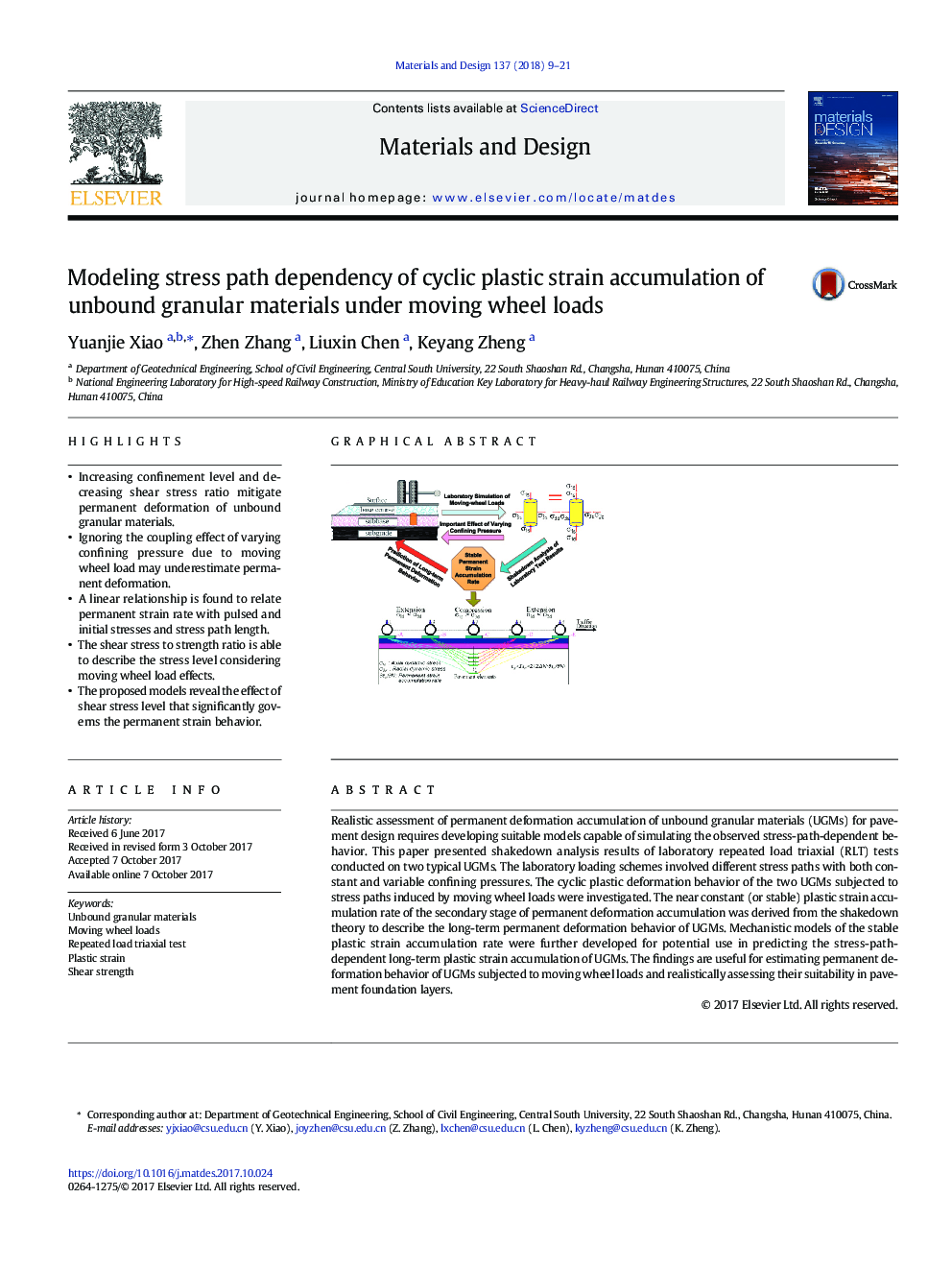| Article ID | Journal | Published Year | Pages | File Type |
|---|---|---|---|---|
| 5023054 | Materials & Design | 2018 | 13 Pages |
â¢Increasing confinement level and decreasing shear stress ratio mitigate permanent deformation of unbound granular materials.â¢Ignoring the coupling effect of varying confining pressure due to moving wheel load may underestimate permanent deformation.â¢A linear relationship is found to relate permanent strain rate with pulsed and initial stresses and stress path length.â¢The shear stress to strength ratio is able to describe the stress level considering moving wheel load effects.â¢The proposed models reveal the effect of shear stress level that significantly governs the permanent strain behavior.
Realistic assessment of permanent deformation accumulation of unbound granular materials (UGMs) for pavement design requires developing suitable models capable of simulating the observed stress-path-dependent behavior. This paper presented shakedown analysis results of laboratory repeated load triaxial (RLT) tests conducted on two typical UGMs. The laboratory loading schemes involved different stress paths with both constant and variable confining pressures. The cyclic plastic deformation behavior of the two UGMs subjected to stress paths induced by moving wheel loads were investigated. The near constant (or stable) plastic strain accumulation rate of the secondary stage of permanent deformation accumulation was derived from the shakedown theory to describe the long-term permanent deformation behavior of UGMs. Mechanistic models of the stable plastic strain accumulation rate were further developed for potential use in predicting the stress-path-dependent long-term plastic strain accumulation of UGMs. The findings are useful for estimating permanent deformation behavior of UGMs subjected to moving wheel loads and realistically assessing their suitability in pavement foundation layers.
Graphical abstractDownload high-res image (217KB)Download full-size image
